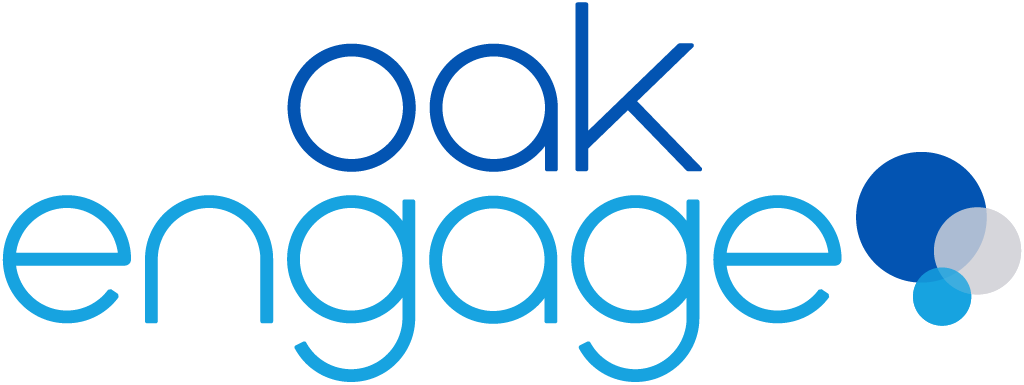Communication is a part of day to day life, whoever you are, whatever you do and wherever you live. For businesses that don’t have the benefit of multilingual communication, communicating with employees can be difficult to say the least. Alignment, employee engagement strategies and safety are all at the mercy of communication. If communication is ineffective, the consequences can be severe: often at the expense of the company. At Oak Engage, we recognise the impact of communication and how vital it is that workplaces remain connected on an international scale. Employee engagement isn’t restricted by borders. Over the course of this blog we’ll explore…
1. The History of Multinational Communication
2. The 3 Main Issues of Multinational Communication
3. Breaking Down Barriers With AI
4. Multinational Business Survival Kit - Tips and Tricks
The History of Multinational Communication
The role of technology in multinational communication is monumental. It has made a huge impact on the way business is conducted the worldover. Whilst international communication is no new concept - we’ve been writing letters to each other since the 4th millennium after all - it has been largely accelerated over the course of the last 200 years. With modern day technology people can send messages to one another instantly, regardless of where they are. However, it’s been a long road to get here. For a long time, pen and paper reigned supreme. Whilst it effectively achieved the same as a modern day message, pen and paper was monotonous, impractical and much much slower. Come the early 19th century however, everything started to change.
A series of technological advancements laid the foundation for the connected society we are part of today. This era saw the extensive development of railway and telegraph networks, revolutionising the speed at which information could travel. The telegraph, in particular, allowed messages to be sent across vast distances with an unprecedented swiftness. As the use of telegrams surged, the invention of the telephone was just around the corner, promising even faster communication. Simultaneously, enhancements in printing technology significantly accelerated the production of news. These concurrent advancements resulted in a dramatic increase in the speed of news dissemination. For the first time in history, news could reach people within hours, a stark contrast to the days or even weeks it had previously taken.
From here, radio started to dominate the communicative sphere, still playing a prominent role in even today’s multi channel environment. From here it was a number of massive, albeit closely tied communicative advancements. From the introduction of movies and television, mass consumption became a prevalent force - further heightening the need and emphasis on developing it further. Fast forward to 1973 and the mobile phone was invented, facilitating, fast, instant and borderless communication. Upon the advent of the internet in 1989 the world was quickly put on a whirlwind trajectory of high speed international communication. With every development, businesses quickly adapted them to suit their own needs and requirements.
3 Main Issues of Multinational Communication
Although technology greatly sped up the process of international communication, it wasn't able to solve all its inherent problems. A need to understand, engage and resonate with international audiences remained elusive. Digital workplaces have come a long way since the very first intranets of the 90s. Whilst they’re exceptionally powerful tools in the right hands, they need the know-how and expertise to execute communication strategies effectively.
Of course many multinational companies and international employees would learn English or another comparative language but the ability to converse in many individual’s first language was not possible. Whilst many multinational companies operate with globally dispersed workforces, they’re often reliant on employees to learn a uniform or universally accepted language like Mandarin Chinese, English or Spanish. Whilst this is a globally accepted requirement for many employees, businesses run the risk of missing out on quality employees - simply because of language capabilities.
Whilst language may be a primary issue, it’s not the only factor of communication…
1. Time Zone Differences
For international businesses, time zones can and continue to be a massive problem. People around the world operate on different schedules, meaning that coordinating meetings, logistics (and a multitude of other things!) can prove nigh on impossible. Important information can be delayed, if not missed entirely.
Embrace technology in all of its facets. Instant communication doesn’t mean much if the person on the receiving end isn’t seeing it. Communication is time sensitive: even if not intentionally so. The meaning and impact of a message can degrade over time. Employees need to be able to access content in a way that works for them. An intranet like Oak Engage can help manage time zone differences by providing a central location where information can be accessed at any time. This allows employees to access updates and communications at a time that suits them, regardless of when they were posted.
2. Language Barriers
Perhaps the most obvious issue, language barriers are the most common blockers for multinational companies. With employees from different countries, language barriers can be a significant issue. If the intranet is only available in one language, it may be difficult for some employees to use. This can lead to misunderstandings and employees missing out on important information.
Modern intranets like Oak Engage often have multilingual support, allowing content to be translated into various languages. This ensures that all employees can access and understand the information, regardless of their native language. Some intranets like Oak Engage also offer real-time translation features for chat or discussion forums, making it easier for employees to communicate with each other.
3. Cultural Differences
Nonverbal communication is a massive and often overlooked element of communication. The written word is open to interpretation. Visual and physical cues are virtually absent in digital communications. Whilst the very essence of communication is achievable, the human touch that makes it more personable is not as viable. Different cultures have different norms and expectations when it comes to digital communication. For example, the level of formality, the use of emojis, and expectations around response times can vary greatly. Misunderstandings can occur if these cultural differences are not taken into account.
An intranet can host a variety of resources to educate employees about the cultures of their international colleagues. This could include articles, videos, webinars, or interactive training modules. By providing a platform for learning and understanding, an intranet can help foster respect and appreciation for cultural differences, reducing misunderstandings.
Breaking Down Language Barriers with AI
If your company operates on a global scale, it's likely that you have employees scattered around the world. Therefore, you need to accommodate various languages across different headquarters. Oak Engage’s pioneering use of AI technology helps to connect disparate and linguistically diverse workforces. With Auto Translations you can engage and align your workforce regardless of their location or language preference.
Auto Translations delivers translation services instantly, extending the reach of your content and enhancing its accessibility across your global organisation. It guarantees that every team member can grasp your company's messages in the language they are most comfortable with. This not only fosters inclusivity but also amplifies the accessibility of your communications. Now, team members can share engaging narratives with the entire company in any language, fostering a level of interaction that was once unattainable.

Oak Engage caters translations to each employee's native language, as stated in their profile. This enables your team to receive translations that align with their language preferences, leading to a more streamlined and efficient communication experience.
Multinational Companies Survival Kit - Tips and Tricks
Operating a business on an international scale isn’t a walk in the park. There are many considerations and moving parts to take into account. We’ve rounded off this blog with a compiled list of helpful tips to help you and your business improve communication.
Helpful Resources
- The Role of Leadership Communication in Change
- What is Business Communication
- Why Employee Communications Is The Basis of Internal Communications
- Overcoming Language Barriers in the Workplace
1. Sensitivity
Be open to issues that your international employees may be experiencing. People from different backgrounds may experience problems that you are either unfamiliar with or weren’t aware of in the first place. Patience, openness and transparency are the best policies in all instances. Empathy is a huge factor when it comes to employee engagement. According to Businessolver’s 2019 “State of Workplace Empathy” report, 93% of employees say that they’re more inclined to stay with an employer that is more empathetic. In the same survey, 82% of employees said they’d leave for a more empathetic employer. Encourage an open door policy and have an open mind.
2. Diversity
With multinational workplaces comes the exciting prospect of working with people from all walks of life. From ethnicity to religion, there are many different factors that need to be considered within the remit of workplace communication. With certain cultural differences come both allowances and understanding. Catering to all employees and their individual circumstances highlights a communication of trust, respect and listening. An appreciation of diversity is key.
3. Support
To be able to effectively support your team, the necessary information, support and resources should be readily available to address any queries or concerns. Modern intranets and employee engagement apps like Oak Engage provide a way to store resources, making information readily available to support asynchronous communication. In these support documents, you can address common issues or FAQs. You can also produce guidelines for other members of staff to educate and generate awareness on cultural differences or language barriers. This not only helps ease tensions but helps establish an awareness of the problems your team are facing: helping to create a culture of empathy.
4. Encourage Open Dialogue
Give your employees the confidence to express their opinions, issues and concerns. Opening the door to two-way communication, such as through an anonymous feedback survey or open communities within your digital workplaces, can make employees feel that they are valued and their voices are heard. Communication is more than just a practice, it’s principles.
5. Promote Team Building
Encourage activities that support employees coming together, sharing experiences and learning how to interact with one another. By simply spending time with different people within the company, employees can learn how to pick up on queues, learn more about individuals and understand them and how they communicate. Whilst it may be difficult to arrange face to face meet ups, arranging virtual events or activities can still be an effective way of engaging your employees.
If you’re experiencing issues with multinational communication or want to find out more about how Oak Engage can help you, talk to an expert today.



